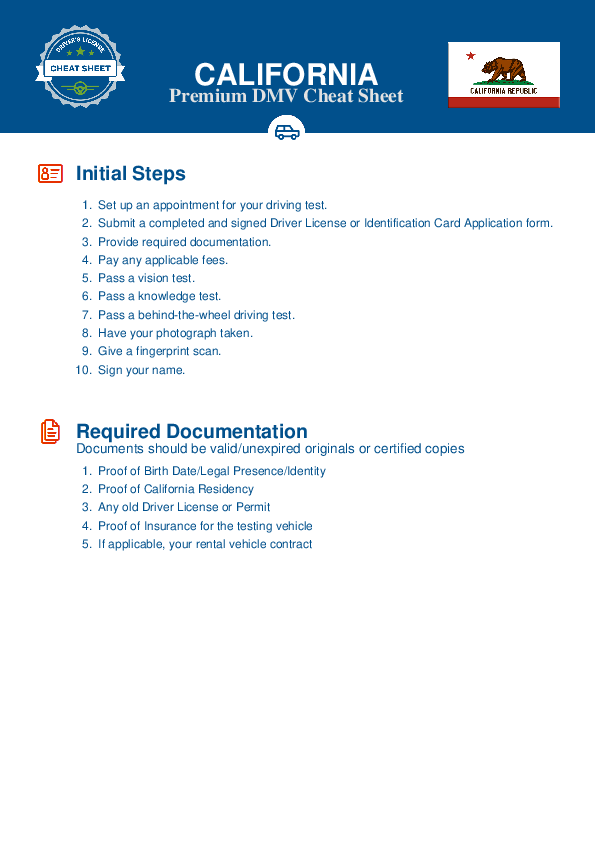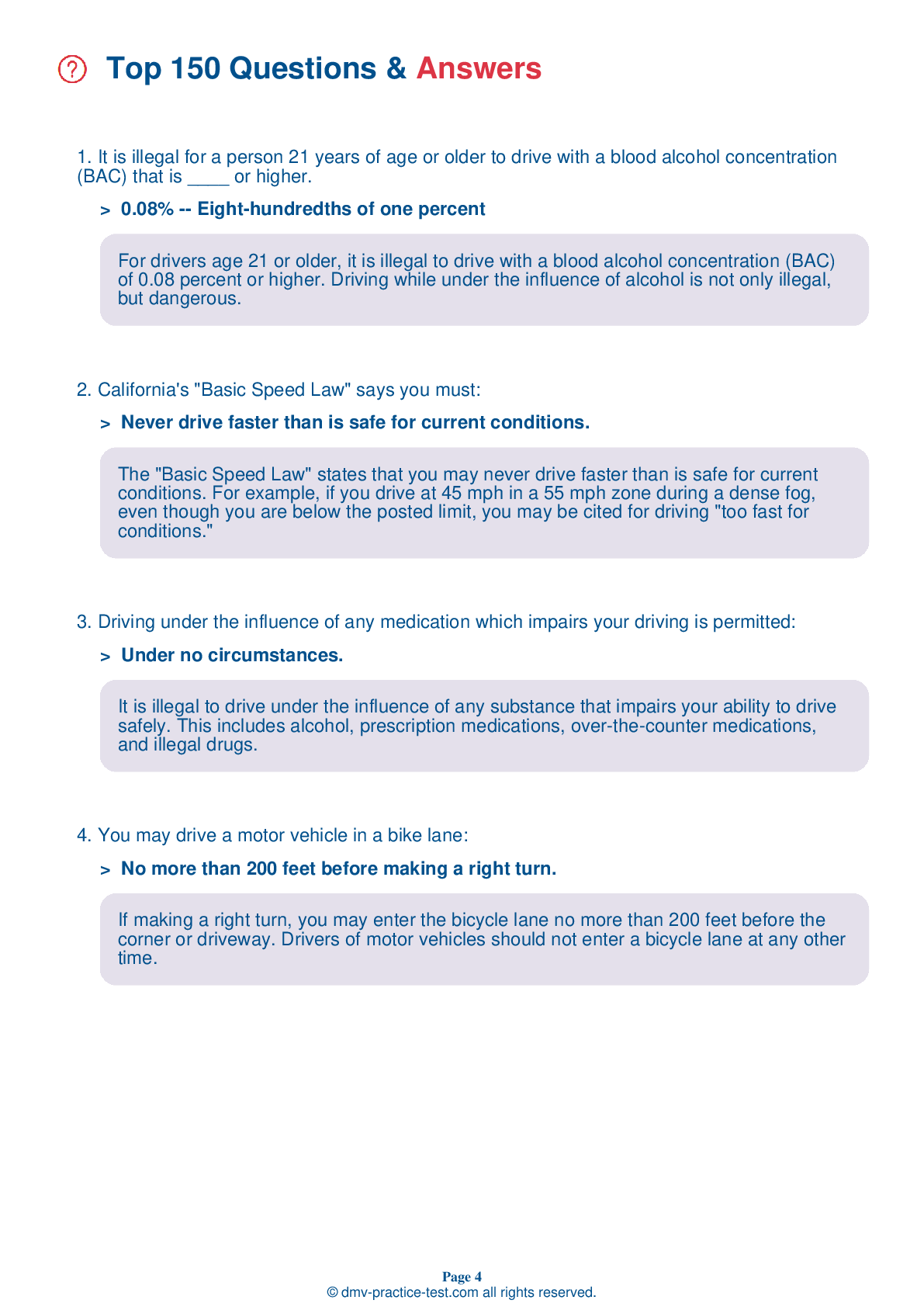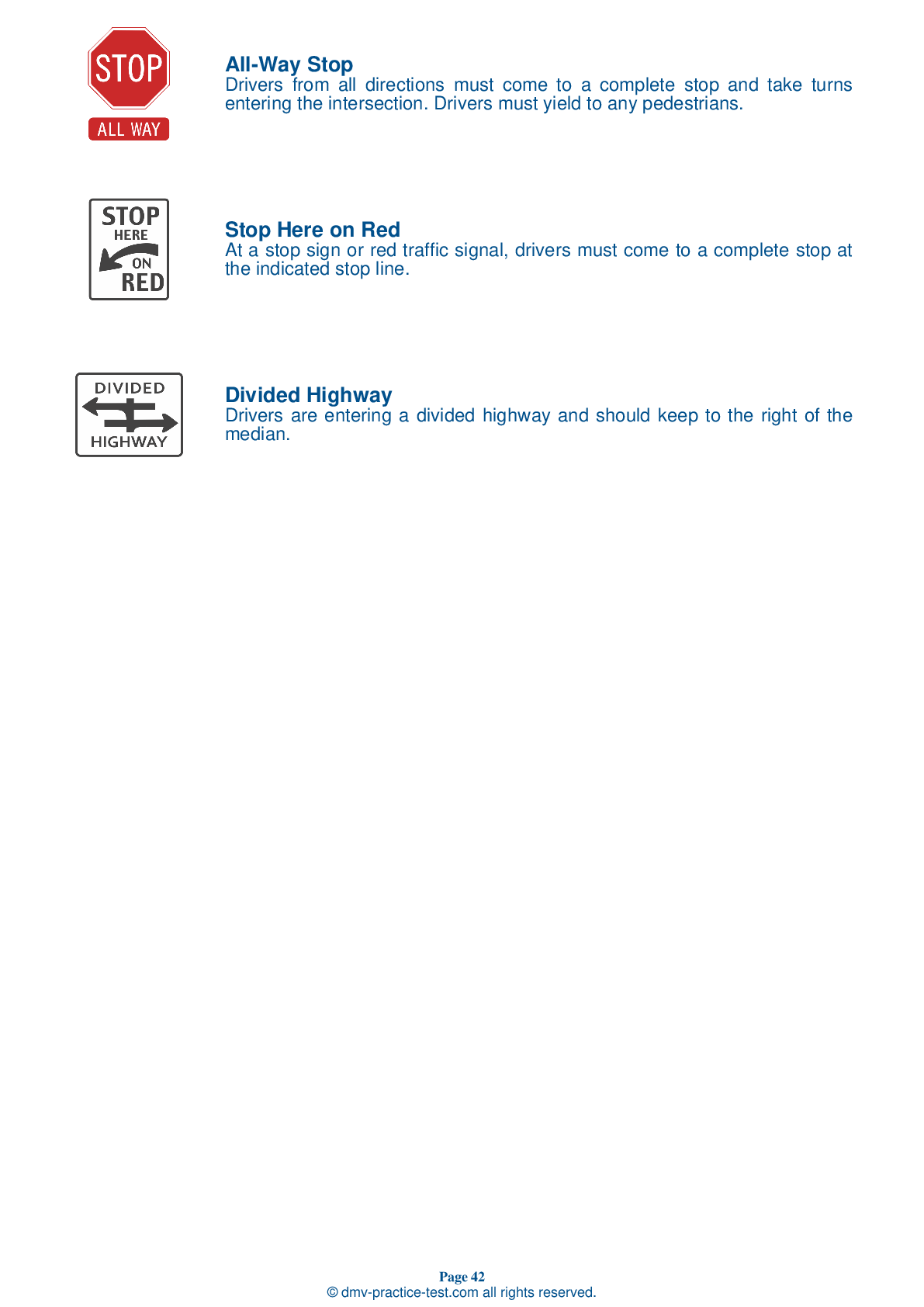FREE California DMV Practice Test #3 Page 7 of 6
This California DMV practice test includes 36 of the most vital road signs and rules questions taken directly from the official California Driver Handbook for 2025. Use genuine questions that are very similar (often identical!) to the DMV driving permit practice test and driver's license exam to prepare for the DMV driving permit test and driver's license exam.
To help you recall the topics, each ca dmv practice test question includes a hint and explanation. The written component of the official DMV test will consist of questions about regulations of the road, traffic signs, and driving statutes, as well as information from the Driver Handbook.
To get the required 83 percent passing score to be allowed to pass, you must correctly answer 38 out of 46 questions (or 30 out of 36 if you are over 18). Use this DMV practice exam to help you prepare for your California instruction permit or driver's license.
How does it work?
California residents using any form of testing help during the test will result in an automatic failure, and the DMV may take further action against your driving permit, so please don't cheat.
Ideally suited for:
- California Driver’s License
- Driver's Learner Permit in California
- CA Refresher Test for Senior Citizens CA
- CA Driver’s License Renewal
What to expect on the CA DMV exam:
- 36 questions
- To pass, you must have 30 accurate answers.
- a passing grade of 83%
- The minimum age to apply;15 ½
37 . When you see this road sign, you should:
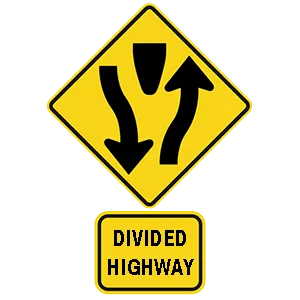
Warning signs are usually yellow with black markings. This sign indicates that a divided highway is beginning and cars should keep to the right.
38 . A driver should:
Although the right-of-way rules provide a guide to determine who should yield the right-of-way at an intersection, no one should assume they automatically have the right-of-way. The situation and circumstances at an intersection must always be considered. Drivers should yield their legal right-of-way if it can help prevent a collision.
39 . You are coming to an intersection with a flashing red light. You should:
A flashing red traffic light means the same thing as a stop sign. You must come to a complete stop, yield to other traffic and pedestrians, and then proceed when it safe to do so.
40 . This white sign means:
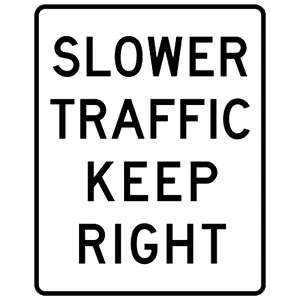
A white, rectangular sign indicates that you must obey important rules. This sign means that drivers should allow the left lane to remain open, when possible, for passing and for faster traffic.
41 . Flash your brake lights or turn on your emergency flashers if you:
If you can see a collision ahead, warn the drivers behind you by turning on your emergency flashers or by tapping your brake pedal quickly three or four times.
42 . When a school bus is stopped ahead on your side of the road with its red lights flashing, you must:
The flashing overhead lights and stop arm on a school bus will be activated when the bus is stopped to load or unload students. If approaching a bus using these signals, you may not proceed until the red lights have stopped flashing and the stop arm has been retracted. Never pass a school bus that is dropping off or picking up students.
43 . There is a vehicle stopped on the right shoulder of the road with its hazard lights on. You should:
If you see a vehicle’s hazard lights ahead, slow down. There may be a collision or other road emergency ahead. Stop and give assistance if asked by anyone, or pass very carefully.
44 . Allow extra space in front of your vehicle when following a:
Allow for extra space when driving behind a motorcycle. Motorcycles can stop more quickly than other vehicles can and you must have adequate room to stop if the motorcyclist brakes or falls off. Also, remember that motorcycles are difficult to see at night because they only have one tail light.
45 . Roads with double solid yellow line markings down the center indicate that passing is:
A double solid yellow line down the center of a road indicates that traffic is moving in opposite directions and that passing is not allowed from either direction.
46 . When being passed by another vehicle:
When being passed, you must yield to the passing vehicle and not increase your speed. Allow the vehicle to safely merge back into your lane.
See the exact questions that will be on the 2025 California DMV exam.
99.2% of people who use the cheat sheet pass the FIRST TIME
LT gives us an insight on how the cheat sheet provided her with all the study questions she needed before taking her test.
Joe initially studied with the handbook and failed his test, he eventually found us online, studied and pass his test the first time around.
